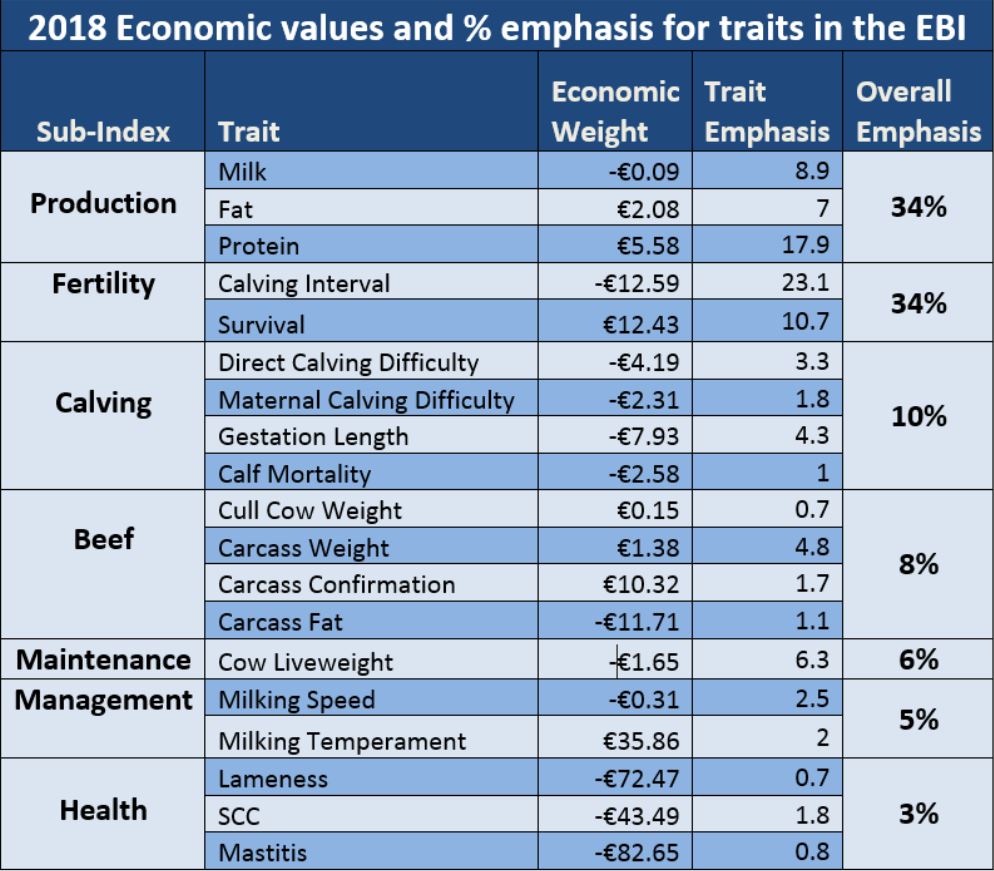It is well documented that Irish dairy farmers are among the most environmentally sustainable food producers in the world. However, the very significant targets that the EU have set us makes it necessary for all farmers to achieve GHG reductions.
Agriculture accounts for 33% of Ireland’s GHG emissions.While Agriculture GHG’s are difficult to reduce, farmers who adopt certain practices and technologies can significantly improve efficiency, improve profitability and lower GHG emissions. One efficiency measure that farmers can implement is the use of the Economic Breeding Index (EBI).
EBI will help farmers breed a more profitable dairy cow and lower GHG emissions. Research by Teagasc illustrates that for each €10 gain in herd EBI there has been a gain of €20 in terms of additional net profit per cow per year while leading a 3% reduction in the carbon footprint.
How does EBI lower the carbon Footprint?
The Irish Economic Breeding Index (EBI) is a tool to help identify profitable animals. It has been in existence for almost 20 years and has been widely adopted by Irish farmers. The current makeup of the EBI is illustrated Below.

Increasing the genetic merit through EBI has the capacity to reduce emissions intensities through number of ways:
- Improving fertility reduces calving interval and replacement rate, thus reducing enteric CH4 emissions per unit of product.
- Increasing milk yield and composition increases the the efficiency of production, which decreases emissions per unit of product.
- The more compact the calving season, the more grazed grass can be included in the cow’s diet. Breeding more fertile cows will help achieve this intensive grazing plan.
- It also contributes to age at first calving. More heifers that will calve down at the optimum age of between 22-26 months of calving thus reducing the “idle time in a cow’s lifetime.
- Improved survival increases the longevity of cows in the herd thus reducing methane emissions per unit of product.
- Improved health reduces the incidence of disease leading to higher productions levels and lower replacement rate thereby lowering GHG emissions. The health sub- index can be used to identify bulls that will breed healthier cows.
- Levels of feed intake are an important element influencing methane production. Smaller cows consume less feed than larger cows. Maintenance Sub-index in the EBI captures cow size using cow liveweight. This can be used to breed a more carbon efficient cow that produces high kg of mils solids.
How to Increase EBI on your farm?
- Check your HerdPlus EBI Report for the genetic indexes of your herd and identify which traits you wish to improve, focusing especially on milk production and fertility.
- Select a Team of bulls from the ICBF Active Bull Listthat are on average better than the genetic index for the traits you wish to improve.
- Focus on your heifers – breeding heifers to carefully selected high EBI bulls is the fastest way to improve herd EBI and profitability
- Use the HerdPlus Sire Advicetool to allocate the selected bulls to the cows in your herd
Conclusion
The EBI continues to deliver improved profitability and lower GHG emissions of Irish dairy cows through combinations of improved milk solids yield, better reproductive performance and greater longevity. The target is increasing your Herd EBI by at least €10 each year for the next 5 years. Use HerdPlus data and reports to improve on farm fertility and increase the genetic gain of your herd.
